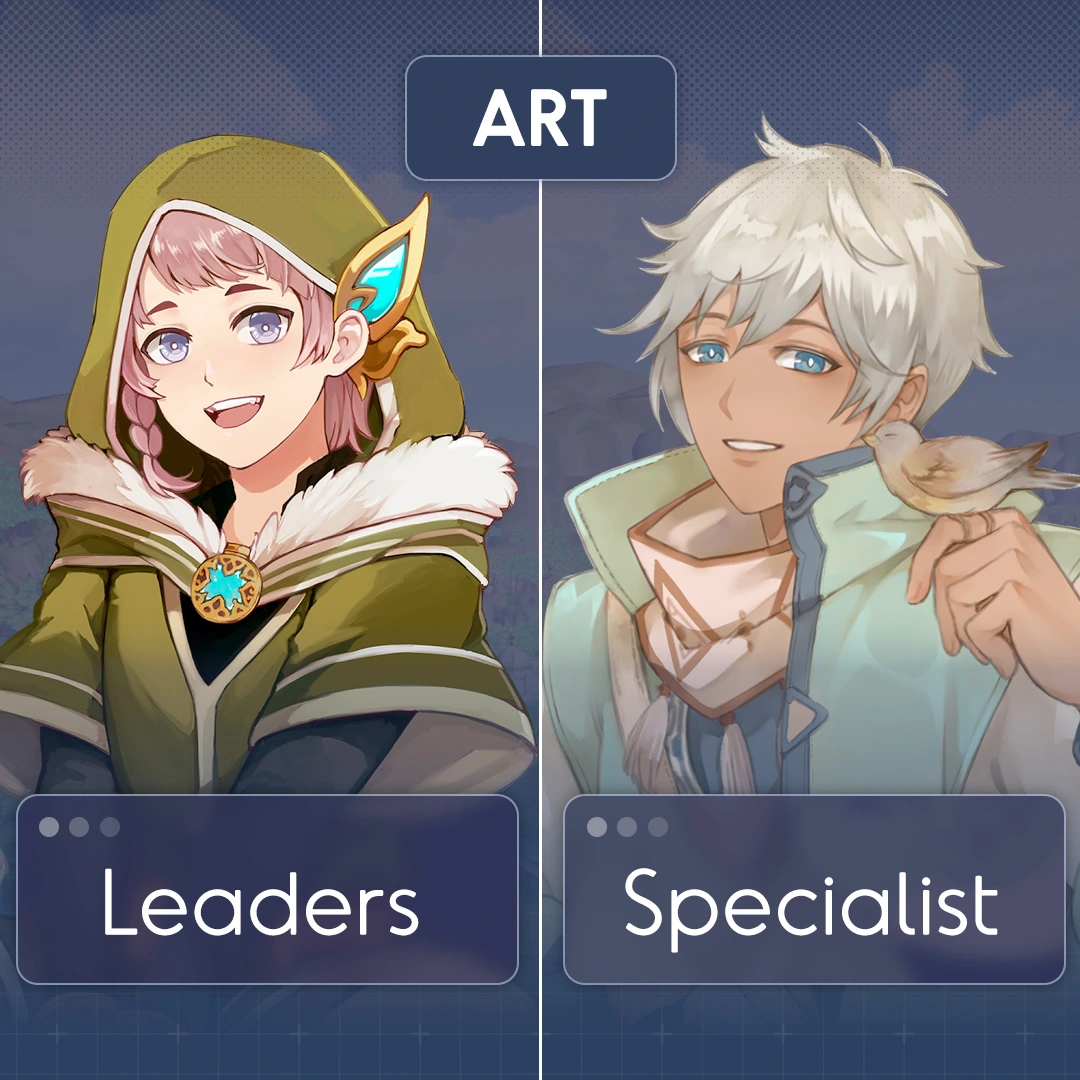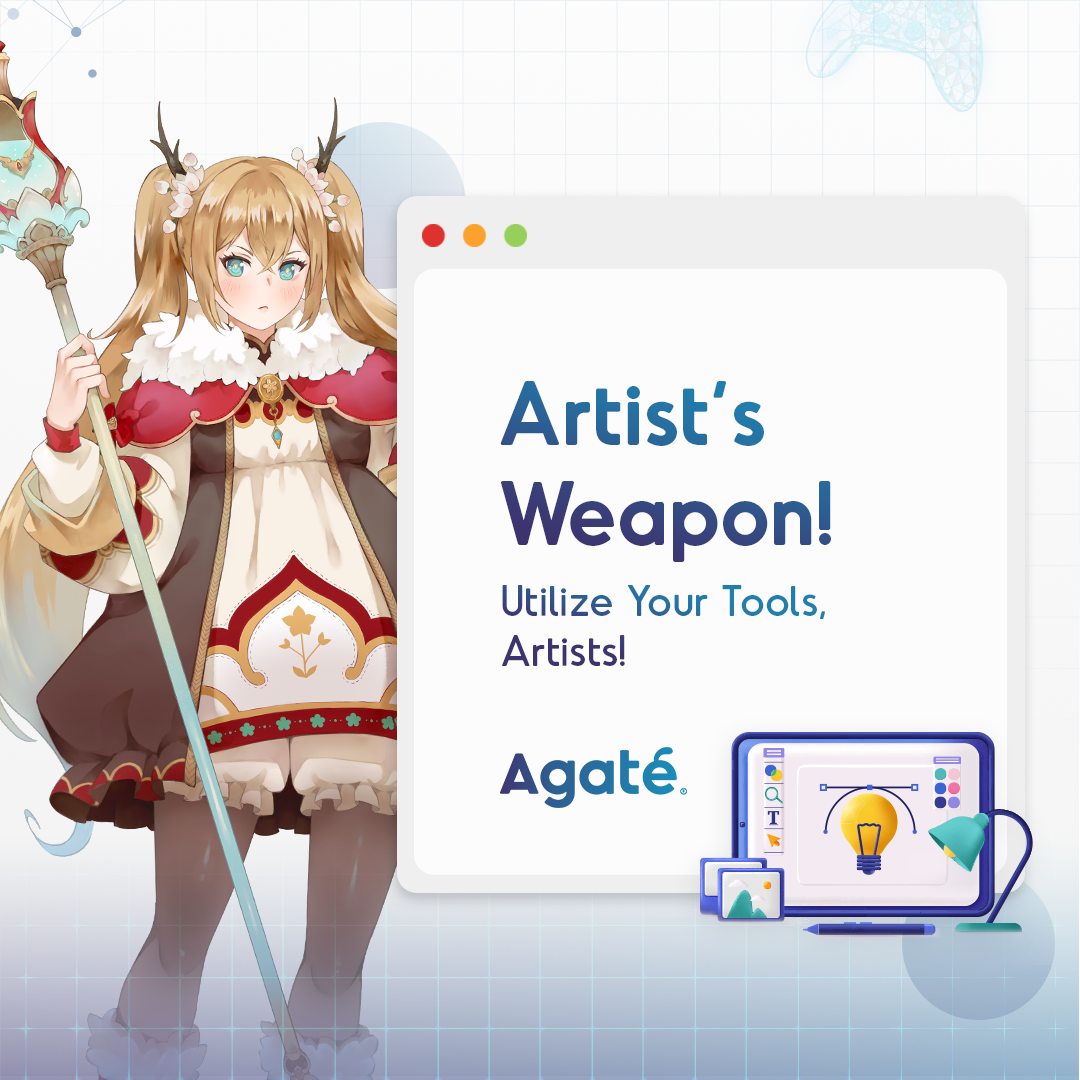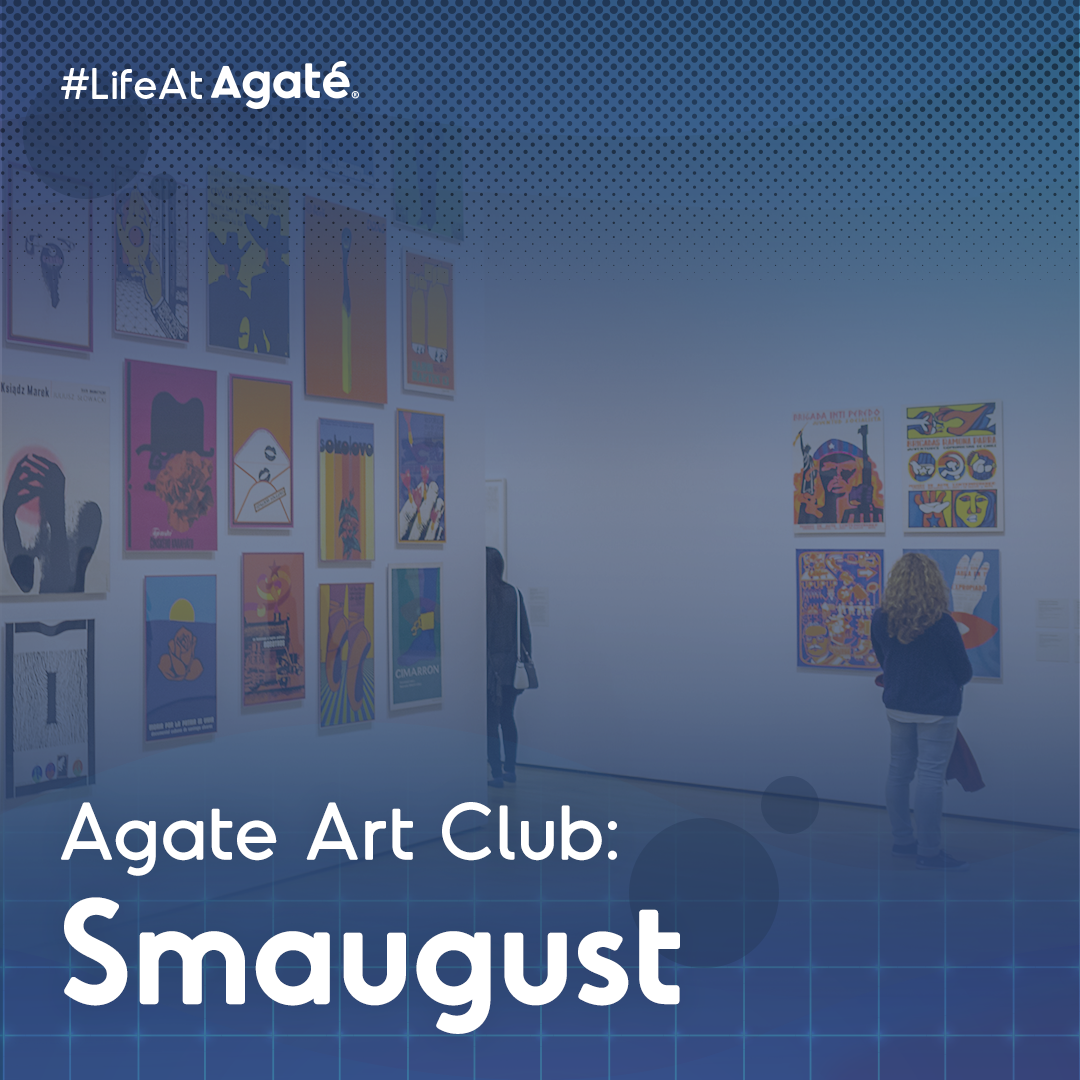When Art Meets Technology: The World of VFX and Technical Artists

At Agate, there are many specialists in the Art Department, including 2D, 3D Character, 3D Environment, Concept, Technical artists, UI, VFX Artists, and Game Animator. Each role requires a unique blend of technical know-how and creativity to produce top-notch artwork. However, two roles in the specialist focus more on technical expertise: VFX and Technical Artist. Let’s learn more about these two roles! VFX Artist At Agate, VFX artists play a crucial role in enhancing the visual effects of games. VFX artists specialize in creating mods for games, which add an extra layer of visual appeal to the game. In addition to this, they are responsible for describing the visuals of game elements and characters’ skills. These elements range from pyro particles, fluids, lightning, explosions, and cracks. They’re responsible for creating VFX concept art by making rough sketches and conducting the RnD for its implementation in the game. This process includes setting up the VFX in the game engine, such as Unity or Unreal, which involves creating textures, shaders, and materials. The ultimate goal of VFX artists in game development is to create visuals that align with the Art Direction and Game Design. By following the directions, they can present visuals that players can easily understand and enjoy, such as character skills, environment atmosphere, visual animation, and UI icon effects. Here are the essential skills required to become a VFX artist in the game industry: Strong knowledge of Realtime VFX in games Proficiency in VFX tools used in the industry pipeline, such as Unity or Unreal game engines Expertise in 2D and 3D VFX VFX artists collaborate with other departments at Agate to bring the game’s visuals to life. They work with Art Direction and Game Design to decide on the best designs, create 2D and 3D VFX, and collaborate with Technical Artists for seamless implementation. Challenges Various VFX Art StylesThe Game Design and Art Direction teams often face Visual Art challenges, such as producing artwork in a particular style ranging from stylized to realistic genres. To tackle these challenges, artists typically utilize software tools that align with the desired art style, making their work more efficient. VFX FormIn certain situations, there may be a need for VFX to be distinct and exclusive from others. For instance, the VFX could be shaped like Hexagons, portals, or other uncommon shapes. To overcome these obstacles, artists usually craft an exclusive 3D shape by utilizing specialized software and designing a personalized shader to realize the required VFX shape. VFX Optimization in GamesWhen creating games, they are often intended for a variety of platforms. However, the challenge lies in ensuring that the VFX remains playable while maintaining its quality. This can be achieved by modifying the Particle Set Up in VFX, such as limiting the particles’ number and reducing the mesh’s poly count. Additionally, it’s essential to consider using shaders on materials to prevent excessive particle usage. Texture Atlasing can also reduce the load on the VFX particle casting process. Play Video Set Up Area of Effect from Magic Shield VFX Technical Artist In the process of game development, technical artists play a multifaceted role that encompasses various stages. Initially, they establish standards and streamlined workflows during the planning stage. They may then assist artists by creating customized tools in the asset creation and polishing stage. Additionally, technical artists may enhance graphics by utilizing shaders, lighting, and post-processing in the game engine. Finally, they must optimize the game to ensure optimal performance and a smooth playing experience. The primary objective of technical artists is to design efficient workflows that enable artists to create high-quality assets on time. They also strive to optimize game performance to provide a seamless and enjoyable gameplay experience. Furthermore, they work towards enhancing the game’s graphical quality to make it visually appealing and engaging. Here are the skills that are required to be Technical Artist in the game industry: In-depth knowledge of game engine Knowledge about 2D workflow and 3D art and tools that artist uses Artistic sense Technical artists collaborate with other roles, such as artists, tech, and designers. This collaboration is essential to understand the specific requirements, objectives, and functioning of each role and establish effective communication channels. Challenges Technical artists face the challenge of keeping pace with constantly evolving technology and ever-increasing standards. They must remain updated and adapt to the latest technological advancements to meet and exceed the growing expectations for game development. They can also address the limitations of diverse devices and platforms by implementing tiers of graphic settings that can be adjusted according to the hardware capabilities of the user. These tiers may include material and shadow quality and utilizing assets with Level of Detail (LOD) and fallback options. Previous image Next image Shader Graph Tips Although there are numerous challenges to face and various necessary skills to acquire as a VFX and Technical artist, here are some tips to help you to be better! A simple tip to become a good VFX Artist is first to understand the basic concepts of Realtime VFX and how they work in game development. Learning the workflow and pipeline tools used in the game industry, such as the software and tools used in game engines, is also important. To learn more, beginners can find courses and tutorials on the Realtime VFX forum. To become a VFX Artist, one must be willing to experiment and try new things when setting up VFX. Sharing previews of VFX creations on platforms like ArtStation, LinkedIn, or Behance can serve as an initial portfolio. To become a better technical artist, having an open mind and a willingness to learn is important. The technology and tools used in game development are constantly evolving, so staying updated and adapting to new changes is important. Developing a practical mindset can also be helpful, as it allows you to find the most effective ways to solve problems. Interested in being a part of our crews? Check out the vacancy list below! VACANCY ON ART DEPARTMENT Position
Leaders & Specialist In The Art Department

Creativity has always been at the heart of an art department. But sometimes creativity can be too elusive and intangible to pin down. This is why the leader and the specialist are important roles in the art department. The call is to ensure all creative deliverables are well executed and align with the client’s expectations. But what is actually the obligation of both roles? The role of an Art Leader Things You Need to MasterTo become one, an Art Leader must understand the basic art concepts from color theory and visual composition to 3D texture. You must translate abstract thinking into stunning optical outputs and an understanding of digital software like Adobe Photoshop, Blender, etc. Not only the creative manner itself, you will also need to have excellent management, communication, and problem-solving skills. This means you must be able to manage all deliverables, time, and workload, formulating creative solutions and giving necessary suggestions according to your artistic experiences. Challenges You Will Be FacingThere are lots of projects you’ll handle. The challenge is to manage all with 100% of your attention. Sometimes, you will need more human resources added to your team, which can be challenging. The Perks You Will HaveArt Leaders will have broader insights into the art pipeline and product direction, have the agency to turn the artistic vision into reality and have a decisive say in strategic decisions within the team. You will have the freedom to grow your team in such a creative way and participate in the global game industry. The role of an Art Specialist Things You Need to MasterAs an Art Specialist, you are required to have some specific skills and knowledge and master some particular tools to optimize the output. Other than that, soft skills will also be fundamentally required, especially problem-solving, time management, communication, and creativity itself. Challenges You Will Be FacingFull commitment to put your heart into the project you handle and the willingness to know more and explore such trends, styles, and art approaches might be very challenging, especially when you must learn something different from your taste and preference. The Perks You Will HaveYou can focus on learning the desired field and develop the required skills. You will also be the expert to solve specific problems in your team. If you think you are the right person to fill one of those positions, we are delighted to have you on our crew! Head to the vacancy list below and see which job matches you perfectly! VACANCY ON ART DEPARTMENT Position Department Division Contract Type 3D Artist Art Gamification Contract Type : Temporary Details 2D Artist Art Gamification Contract Type : Temporary Details Technical Artist Art Art Service Contract Type : Temporary Details Load More
Artist’s Weapon: Skills and Tools To Master

The gaming industry, a continually evolving creative field, provides many opportunities for artists to follow their passion and build successful careers. Since the gaming industry is constantly expanding, artists need to keep up with the rapidly evolving skills and tools used in the industry. What Skill Does An Artist Needs? An artist is responsible for a visual aesthetic that includes color, composition, value, shape, textures, anatomy, and perspective. With the variety of elements that Artists need to create, what are the essential skills required for an Artist? LeadershipAn artist is responsible for completing a project, which may be multiple, one at a time, with numerous people in a team. Leadership skills must bring out the finest qualities in team members and inspire them to collaborate to accomplish a common goal. CommunicationAs communication goes both ways, an artist must be able to speak their mind and listen. Artists must translate their vision into words and communicate it, not just visuals. TeamworkTeamwork skills are needed because, in game development, an artist will work closely with the team to achieve the goals set at the beginning. Problem-solvingArtists will encounter various obstacles during their work. It will only worsen if the issue is not handled by the deadline. That’s why an artist needs to be a problem solver. CreativityParticularly in game development, an artist must be a creative individual capable of producing innovative ideas for their artwork. Time managementArtists need to use time wisely and productively. They also need to manage their time to focus and control the time to complete their tasks. Good time management can increase work productivity. Attention to detailArtists must be able to carry out and finish a task while demonstrating thoughtful thought for all aspects concerned, no matter how minor. This entails efficiently managing time and resources while monitoring and verifying work or information. What Tools Do Artists Utilize? Raster Illustration (Adobe Photoshop)Rasterization is a technique with a pixel-by-pixel system. It allows the creation of complex shapes and color blendings, such as creating concept art or 3D texturing. (Vector Illustration) Adobe IllustratorVector is an illustration technique with a data calculation system that is unaffected by the number of pixels, such as creating UI assets. UI/UX (Figma and Adobe XD)These tools are used to design User Interfaces in the game, such as buttons, pages, head-up displays, and the outcome when it is run by the player/user. 3D Modelling (Zbrush and Blender)3D Modelling involves creating three-dimensional points or vertices by vertex objects in 3D space. Zbrush and Blender are famous for making 3D objects because they are easy to use and have a broad scope for making games and cinematic assets. Rigging (Blender)Rigging is like giving a “bone” to an object/character so it is ready to transform as animation. 3D Animation (Blender, Rokoko Studio)Animation is the phase where the rigged object is moved and posed keyframe by keyframe into a sequence that matches the desired movement in the game. Such as idle, walk, run, jump, attack, etc. Texturing (Blender, Adobe Photoshop, Substance Painter, Substance Designer Texturing)Texturing gives color to 3D objects; the basic principle is similar to raster illustrations. Game Engine (Unity Engine, Unreal Engine)The final phase is to transfer the finished asset into the game engine to develop the game itself. Again, a specialist game artist must master the game engine’s features and tools to set every visual asset properly. If you think you can utilize these tools to your advantage and more, head down below and show us what you’ve got! Vacancy ON ART DEPARTMENT Position Department Division Contract Type 3D Artist Art Gamification Contract Type : Temporary Details 2D Artist Art Gamification Contract Type : Temporary Details Technical Artist Art Art Service Contract Type : Temporary Details Load More
Agate Art Club: Smaugust

In Agate, we provide our crews with a way to express their ideas. Instead of just meddling with their work, we give them space to express their creativity through various activities, media, and clubs. Just like a game that is supposed to be fun and exciting, we want to create the same atmosphere working behind the desk as game developers. One of the activities is Agate Art Club. Agate Art Department creates appealing activities for game artists to fine-tune their skills. One of the activities is a monthly event where game artists, or any interested crew, draw a specific creature or thing. Last month’s Agate Art Club theme is Smaugust, inspired by Smaug, the dragon from The Lord of the Rings series. Here are the arts they submitted. Our special thanks to our artists: Abiyyu Prishdian Vivekananda | Rookie Game Artist Ar Cahyadi Indra | Head of Art Department Kelvin Adriel Setiawan | Rookie Game Artist Nelson Setiadi | UI/UX Artist William Joelian | Associate Lead Artist And also to our crew from another department: Payoma Kusuma | Game Producer Which Smaugust is your favorite? or do you wish to join Agate Art Club? We currently open roles for artists. Take a look at our opening here: Artist roles. Vacancy on Art Departement Position Department Contract Type 3D Environment Artist Art Contract Type : Full-time Details Art Director Art Contract Type : Full-time Details [Mythic Protocol] Senior 3D Character Artist Art Contract Type : Full-time Details [Mythic Protocol] Creature 3D Artist Art Contract Type : Full-time Details Load More

